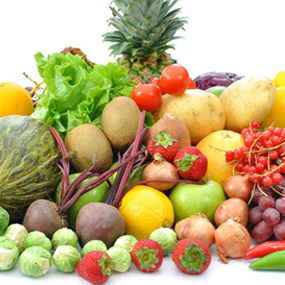
You Are What You Eat
Whether you’re fighting fatigue, searching for ways to boost your immune system, or recovering from an illness, doctors often recommend healthy lifestyle changes.
Written by The Healthline Editorial Team
Prevention and management of symptoms can often significantly be helped through the foods you eat.
Kelp
Iodine is essential to the thyroid, the butterfly-shaped gland in the neck. Low thyroid levels can cause sluggishness, weight gain, and moodiness.
Kelp is rich in calcium, magnesium, potassium, and—most importantly for low thyroid levels—iodine. Be aware that overdoing iodine can create problems too. The key is a moderate amount to raise energy levels and brain functioning.
Other power greens include kale, bok choy, spinach, parsley, green beans, and alfalfa.
Ginger
You may know ginger as a cooking spice, but its centuries’ old uses range from aiding digestion and calming upset stomach to treating arthritis. Ginger is now recognized by many healthcare professionals for reducing nausea, particularly in the prevention and reduction of postoperative nausea and vomiting (PONV).
Sources of ginger include fresh ginger root, teas, extracts, capsules, and oils, and dried ground as a spice.
Mushrooms
Mushrooms are hailed for their health-promoting properties. Common types include white button, shiitake, portabella, and crimini. Shiitake mushrooms promote a healthy heart by accelerating LDL (“good" cholesterol). Studies continue to examine how shiitake mushrooms may fight cancer by boosting the immune system through the compound lentinan, which is believed to slow tumor growth. According to the American Cancer Society, “at least one randomized clinical trial of lentinan has shown it to prolong life of patients with advanced and recurrent stomach and colorectal cancer.”
Fats
Not all fats are created equal. Calorie-counting often leads to the drastic reduction of fat from the diet. However, fat is essential for healthy brain function. Plus, cutting fat entirely may lead to depression and contribute to acne.
Healthy fats—monounsaturated and polyunsaturated—can help reduce your risk of heart disease. Healthy sources of fat include fatty fish, avocado, olive oil, and certain nuts, such as walnuts, almonds, and pecans.
Beets
Carbohydrates give you energy. In today’s fast-paced world, it’s easy to turn to processed carbs that don’t provide other nutrients. However, beets are a natural source of energy packed with carbs, calcium, iron, and vitamins A and C.
Although they tend not to rate high in popularity, beets are equipped to satisfy a mid-afternoon sugar craving without the guilt. Plus, studies reveal that beets help fight cancer and protect against heart disease.
Probiotics
Probiotics are live microorganisms (“friendly bacteria”) that our bodies need to protect against disease. They can be found in foods like yogurt, kefir, and soy beverages.
Probiotics can also be obtained in supplement form. Ongoing studies continue to explore the potential of probiotics to treat diseases including irritable bowel syndrome, skin infections, and certain cancers. Research looks promising. A report from the National Center for Complementary and Alternative Medicine revealed evidence of probiotics to treat diarrhea and prevent urinary tract infections.
Vitamin D
Turning to calcium-rich foods instead of calcium pills is a recommended step toward healing broken bones. The next step is incorporating vitamin D, which helps your body absorb the calcium.
Calcium sources include dairy products such as yogurt and milk, green vegetables such as kale, nuts, and beans. Vitamin D sources include eggs, dairy, and fatty fish such as sardines and salmon.
Swiss Chard
A relative of the beet, Swiss chard provides an excellent source of vitamins C, E, and K, as well as fiber, zinc, and calcium. With a wide green leaf and a stalk ranging in color from white to red to yellow, Swiss chard combines a bitter taste with a salty flavor.
This nutrition-packed vegetable supports bone health, fights stress-related disease, and holds anti-inflammatory properties. Sautee it, toss it in a salad, or replace it for spinach in any dish.


 留言列表
留言列表
